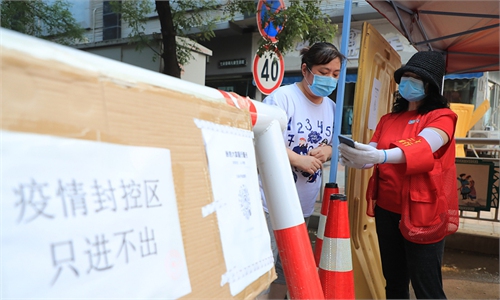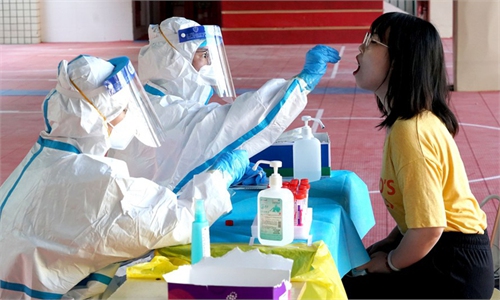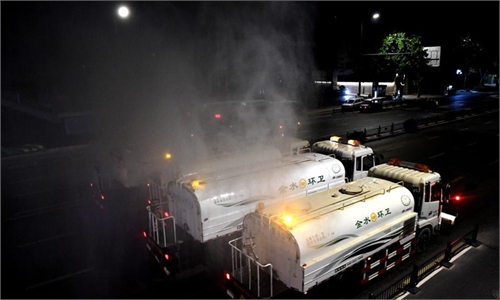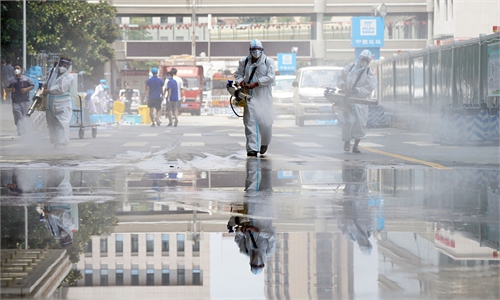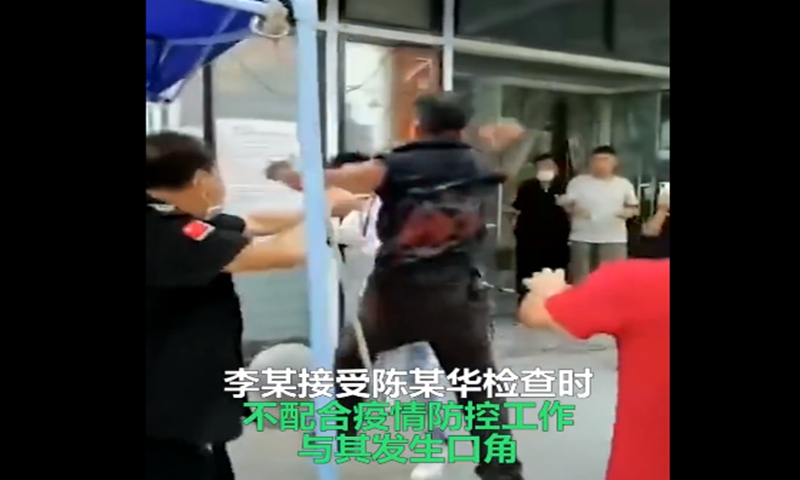
A man surnamed Li in Zhengzhou, Central China's Henan, is put into a 15-day administrative detention and fined 500 yuan ($77.1) for refusing to scan health code and hitting epidemic prevention volunteers on Friday. He also threatened the volunteers and other workers with a knife. Photo: Sina Weibo
The public security bureau of Central China's Henan released 11 crimes related to COVID-19 prevention and control work on Wednesday, among which one involves a confirmed patient who is under criminal investigation for hiding itinerary after visiting internet cafes.
The Global Times reporter found that the 11 crimes can be roughly divided into four types: hiding itinerary, disobeying the management staff during nucleic acid testing, failure to cooperate with epidemic prevention checking, and inventing facts to disturb public order.
A patient escort surnamed Ruan at the Sixth People's Hospital in Zhengzhou, capital city of Henan, was investigated by local police for hiding itinerary and posing risks of spreading the coronavirus.
Ruan is suspected of violating regulations of anti-epidemic and disease prevention law as he intentionally hid the fact that he went to internet cafes near the hospital several times during the period from July 16 to 30. He was confirmed as a COVID-19 patient on July 30.
Another man in Zhengzhou surnamed Li was put into a 15-day administrative detention and fined 500 yuan ($77.1) for refusing to scan a health code and hitting epidemic prevention volunteers. Chen also threatened the volunteers and other workers with a knife.
Two people from Zhengzhou and Jiyuan were detained for disobeying the management staff at nucleic acid testing sites. One was detained for seven days for refusing to wear a mask and insulting workers, while another one was put under compulsory criminal measure for cutting in line and beating police officers.
Five people from Zhumadian, Anyang, Shangqiu, and Jiaozuo in Henan, were detained or banned for spreading fake information.
Henan reported nine infections on Tuesday, seven in Zhengzhou, one in Zhumadian and one in Kaifeng.
The province now has 13 high-risk areas and 39 medium-risk areas as of press time.
